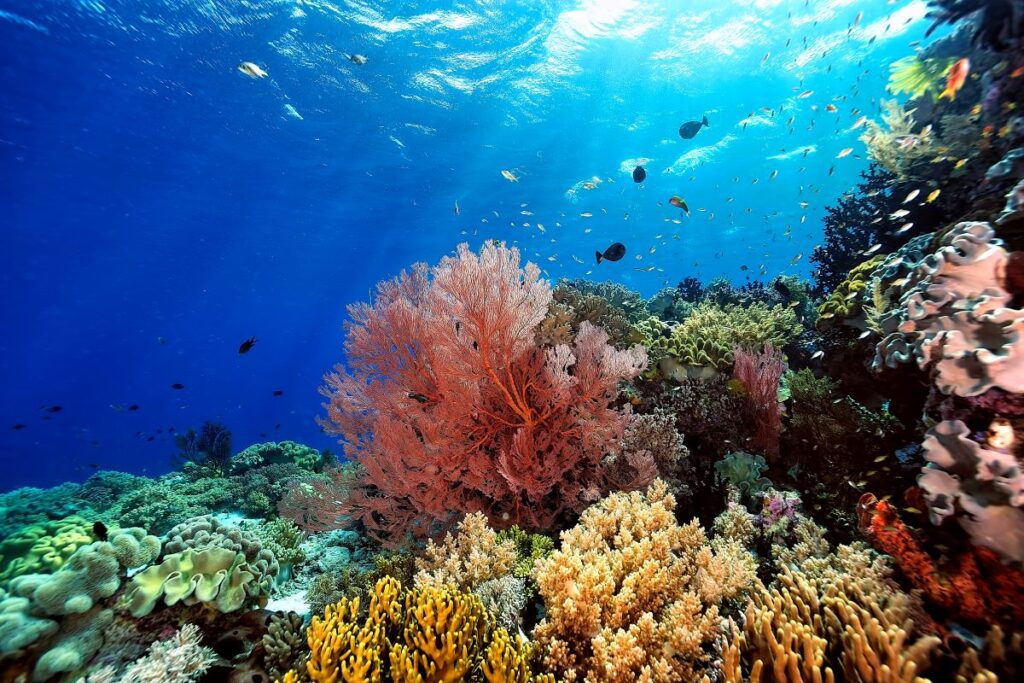
World Oceans Day by United Nations is a reminder of the importance of oceans and ocean life for the rest of our planet. This year the theme of this day is Planet Ocean, which embodies the desire to put the ocean first in our work of protecting the natural environment.
How can BIOVIA, BIOVIA customers and molecular modelers contribute to our understanding of the oceans and help address the various challenges they face?
Victor Millman
Here are some ways in which molecular modeling can assist:
- Environmental impact assessment: Molecular modeling can be used to simulate the behavior and interactions of pollutants in the ocean. By modeling the molecular structure and properties of pollutants, researchers can gain insights into their transport, distribution, and potential impacts on marine ecosystems. This information can inform environmental impact assessments and aid in developing strategies for pollution prevention and mitigation. Plastics pollution is one of the main dangers to ocean state of health. An example of scientific research aimed at understanding degradation trends of plastic debris is the paper from Pennsylvania State University, “Ranking environmental degradation trends of plastic marine debris based on physical properties and molecular structure” (Nature Communications) 11 (2020) 727. The paper attempts to answer a key question from a data science and machine learning perspective: how many descriptors would be necessary to model the degradation behavior of ocean plastics or understand if degradation is possible? The authors adopt a data-driven approach to degradation trends of plastic debris by linking abiotic and biotic degradation behavior in seawater with physical properties and molecular structures. Molecular simulations with BIOVIA Materials Studio provide a hierarchy of descriptors including glass transition temperature and hydrophobicity, to help classify ocean plastics into fast, medium, and slow degradation categories.
- Understanding oceanic processes and toxicity of dissolved pollutants: Molecular modeling can help elucidate fundamental processes occurring in the oceans, such as the behavior of dissolved gases, nutrient cycling, and chemical reactions. For example, scientists can employ molecular dynamics simulations to study the movement and reactions of water molecules, ions, and dissolved substances at the molecular level, thereby providing valuable insights into oceanic processes and phenomena. The molecular effects of dissolved pollutants are no less dangerous than the consequences of accumulating plastic waste. Some of them can be extremely toxic for fish and other marine wildlife. The study by scientists from Safety and Environmental Assurance Centre at Unilever and from academic groups in Canada and Netherlands combined experimental tools and molecular modeling to aid the identification of chemicals that induce acute fish toxicity (“Using membrane–water partition coefficients in a critical membrane burden approach to aid the identification of neutral and ionizable chemicals that induce acute toxicity below narcosis levels”, Environmental Science: Processes & Impacts 25 (2023) 621. BIOVIA COSMOconf module helped to assess the phospholipid membrane–water distribution ratio and use it in a detailed risk assessment for chemicals of concern.
- Climate change research: Molecular modeling plays a crucial role in climate change research related to the oceans. It can be used to simulate and understand the behavior of greenhouse gases, such as carbon dioxide, in the ocean-atmosphere system. These simulations help predict the impact of climate change on ocean acidification, temperature, and circulation patterns, enabling scientists to develop more accurate climate models. The solubility of gases and liquids in seawater becomes an essential property in this context, and such tools as BIOVIA COSMOtherm, COSMOconf, Materials Studio are extensively used to characterize relevant processes. Perhaps more importantly, the CO2 capture aspect is essential to slow ocean acidification – which is essentially caused by the dissolving of excess CO2 in water and the creation of carbonic acid. Materials science research aimed at the capture and catalytic conversion of excess CO2 is the mainstream of modern chemistry: molecular modeling is essential in the catalyst design for such applications.
- Material design for sustainable solutions: Molecular modeling facilitates design and optimization of materials for sustainable oceanic solutions. For instance, researchers can use computational methods to model and predict the properties of materials used in desalination processes, marine energy harvesting, deep-sea mining, or marine pollution remediation. This allows for the development of more efficient and environmentally friendly technologies.
Overall, molecular modeling provides a valuable platform for understanding, predicting, and solving complex challenges related to the oceans. By simulating molecular interactions and behaviors, researchers can advance our knowledge, contribute to sustainable ocean management, and promote the conservation of these vital ecosystems.

